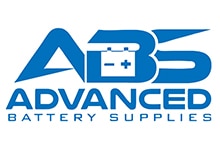Why Not ??
By splitting the bank you always have backup power,
Here you go. About sailboats but perfectly applicable to an expo truck:
The benefits to a single large hard wired bank are many, where the benefits to multiple on-board house banks are few to non-existent. There are however considerations for wiring and isolation that owners can also consider.
The question is not one of the
physical amount of batteries on-board but rather a question of how these batteries are wired or used as a
BANK and how they are charged.
For example having
three individual banks on-board,
HOUSE 1,
HOUSE 2 and a STARTING bank, only serves to yield poorer house bank cycle life.
IS IT BETTER TO HAVE ONE OR TWO BATTERY BANKS FOR HOUSE USE?
Begin Quote = Nigel Calder
"The popular arrangement of having two house banks alternated in use needs scrutiny before I go any further.
LIFE CYCLES: As we have seen, the life expectancy of a battery in cycling service is directly related to the depth to which it is discharged at each cycle - the greater the depth of discharge, the shorter the battery’s life.
This relationship between depth of discharge and battery life is NOT linear. As the depth of discharge increases, a battery’s life expectancy is disproportionately shortened. A given battery may cycle through 10% of its capacity 2,000 times, 50% of its capacity 300 times and 100% of its capacity around 100 times.
Let’s say, for arguments sake, that a boat has two 200-ah battery banks, alternated from day to day, with a daily load of 80 Ah. Each bank will be discharged by 40% (80 Ah of one of the two 200 Ah banks) of its capacity before being recharged. The batteries will fail after 380 cycles, which is 760 days (since each is used every other day). If the two banks had been wired in parallel, to make a single 400 Ah battery bank, this bank would have been discharged by 20% of capacity every day, with a life expectancy of 800 days, a 5% increase in life expectancy using exactly the same batteries!
But now let’s double the capacity of the batteries, so that the boat has either two 400 Ah banks, or a single 800 Ah bank, but with the same 80 Ah daily load. The two separate banks will be cycling through 20% of capacity every other day, resulting in a total life expectancy of 1,600 days. Doubling the size of the battery banks in relation to the load has produced a 210% increase in life expectancy. The single 800 Ah bank will be cycling through 10% of capacity every day, resulting in a life expectancy of 2,000 days - a 25% increase in life expectancy over the two (400 Ah) banks, and a 250% increase in life expectancy over the single 400 Ah battery bank!
There are two immediate conclusions to be drawn from these figures:
1. For a given total battery capacity, wiring the (house) batteries into a single high capacity bank, rather than having them divided into two alternating banks, will result in a longer overall life expectancy for the batteries.
2. All other things being equal, any increase in the overall capacity of a battery bank will produce a disproportionate increase in its life expectancy (through reducing the depth of discharge at each cycle).
"
End Quote:
While Nigel does an excellent job with this, and
keeps it simple, there is really some more detail to it.
Why one large bank is best for reasons beyond even what Nigel Calder has touched on.
#1 It is simply more efficient to charge one bank rather than two unless your using 100% free energy, and you have lots of excess time to on your hands. For a cruising boat using solar, your charging time is not really unlimited. Even then, with so called free energy, "finish charging", defined as getting back to 100% SOC, with two banks is considerably less efficient due to the longevity of the time needed, during the charge acceptance decline.and inordinate amount of time "finish charging" a lead acid banks takes. It is actually quite rare on a cruising sailboat to be able to get a house bank to a true 100% SOC in one solar day. At high states of charge the batteries become horribly inefficient at storing energy. The Coulombic efficiency can get as bad as 40% - 50% inefficient above 95% SOC and even worse once you're over 97% SOC. This means a lot of your solar energy is getting wasted pushing the batteries upward towards 100%. Charging two separate banks means your high SOC inefficiencies essentially double and require double the charging hours.
#2 A larger contiguously wired bank will not be as dramatically affected by the Peukert effect. Your batteries are rated at a 20 hour discharge rate and for a 100Ah battery this would be a 5A load. By increasing the bank size you'll actually get more usable Ah capacity out of a larger bank, with the same DC load, than you do with a smaller bank with the same DC load. Once again we are gaining usable Ah capacity, rather than losing it, when we use a single large house bank.



